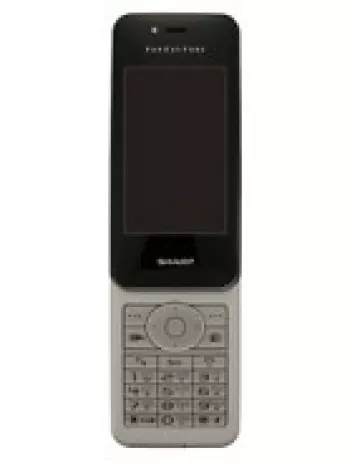
Overview of Sharp GX40
The Sharp GX40 was a feature phone launched in the second quarter of 2005. As a model part of the early 2000s cellphone era, it catered to the mid-range market, boasting a few innovative features for its time. Although the device has been discontinued, its unique characteristics and contributions to mobile technology are worth noting.
Design and Build
The Sharp GX40 has dimensions of 93 x 46 x 22 mm and a weight of 98 grams. Though compact and lightweight, the phone's design reflects the typical aesthetics of its era with a small, yet crisp display. It comes equipped with a Mini-SIM slot and features a traditional keypad that aids in quick dialing and texting. The lack of modern touch capabilities is made up for with its ergonomic and efficient layout design.
Display
The device features a TFT screen that can display 256K colors, ensuring vivid and vibrant color representation. The screen size stands at 2.0 inches, with a resolution of 240 x 320 pixels at an aspect ratio of 4:3. This was standard for feature phones during this time, providing sufficient visual clarity for basic tasks and activities, such as viewing photos and navigating through the menu system.
Camera
The main camera on the Sharp GX40 is a single 1.3 MP shooter. During the early 2000s, phone cameras of this caliber were considered quite adequate for taking simple snapshots. It supports video recording at a QCIF resolution, allowing for basic video capture. Despite not matching modern standards, the camera sufficed in capturing everyday moments in reasonable quality for the technology available back then.
Battery
The phone is powered by a removable Li-Ion battery with a capacity of 650mAh. While this might seem small compared to today's devices, it ensures a standby time of up to 290 hours and a talk time of about 3 hours and 50 minutes. The removable battery allowed users to swap in a fully charged spare in case they ran out of power, which was a significant advantage for those who used their phone extensively.
Storage and Memory
The internal storage options were modest, with support for a miniSD card to expand the storage. The device could store up to 500 phone book entries, which was a generous amount at the time. Additionally, it logged up to 10 dialed, received, and missed calls, offering sufficient capability for managing call information.
Connectivity and Communication
On the connectivity front, the Sharp GX40 comes with Bluetooth 1.1, an infrared port, and a proprietary USB connection. Although lacking WLAN support, it provides FM radio functionality and leverage GPRS Class 10 for accessing basic internet features through a WAP browser. Users could send SMS, MMS, emails, and engage in instant messaging, making it a reasonably connected device for its time.
Additional Features
When it comes to additional features, the Sharp GX40 was equipped with Java MIDP 2.0, enabling users to download and enjoy simple games and applications. Polyphonic, MP3, AAC ringtones were downloadable, enhancing the multimedia features. Despite missing sensors like those found in modern smartphones, it catered well to entertainment and communication needs typical of a mid-2000s feature phone.
Conclusion
The Sharp GX40 encapsulates the feature phone era's spirit with its balance of practical features and technological advancements. While it may not compare to the multifunctional smartphones today, it illustrates the evolution of mobile technology from simple communication and utility devices to today's powerful handheld computers. The GX40 stands as a reminder of how far technology has evolved and represents the innovative drive that has continued to push mobile technology forward.
Key Features of Sharp GX40
- GSM Technology with 2G bands: GSM 900 / 1800 / 1900
- Compact Dimensions: 93 x 46 x 22 mm
- Lightweight: 98 g (3.46 oz)
- TFT Display with 256K colors and resolution of 240 x 320 pixels
- Expandable Memory via miniSD card slot
- 1.3 MP Main Camera with Video capability
- Supports SMS, MMS, Email, and Instant Messaging
- FM Radio
- Bluetooth 1.1 and Infrared Port for connectivity
- Removable Li-Ion battery with up to 290 hours standby time
Sharp GX40 Drawbacks
- Supports only 2G GSM networks, no support for 3G or 4G.
- No EDGE technology, limiting internet browsing speeds.
- Small display size with unspecified dimensions might not be suitable for modern standards.
- Main camera is only 1.3 MP with low-quality QCIF video recording.
- No front-facing camera for selfies or video calls.
- No loudspeaker, which may affect call clarity or media playback without headphones.
- Lacks a standard 3.5mm headphone jack.
- Limited connectivity options with only Bluetooth 1.1 and no WLAN support.
- Does not feature GPS for location services.
- Uses a proprietary USB connection instead of a standard one.
- Short talk time of up to 3 hours and 50 minutes, which could require frequent charging.

View Also
More Phones
All Rights Reserved +14045 Phones © Mobilawy 2025

























